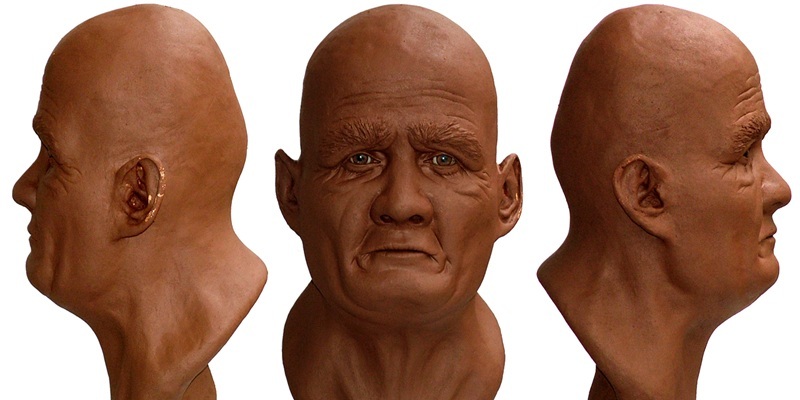A computerised image has been revealed of the reconstructed head of Simon of Sudbury, the controversial former Archbishop of Canterbury 630 years after he met his grizzly end during the Peasants’ Revolt of 1381.
Using skeletal detail taken from his part-mummified skull, forensic artist Adrienne Barker from Dundee University employed state-of-the-art reconstruction techniques to recreate Sudbury’s facial features and complete a series of 3D bronze-resin casts of his head.
The skull has been kept at St Gregory’s Church at Sudbury in Suffolk for more than six centuries.
The university’s centre for anatomy and human identification, who have in the past reconstructed the faces of German composer Bach and Cleopatra’s sister Arsinoe, were commissioned for this project.
Adrienne carried it out as part of her MSc forensic art studies under the tutelage of facial reconstruction expert Professor Caroline Wilkinson.
Sudbury was made Chancellor of Salisbury, and Bishop of London, before becoming Archbishop of Canterbury in 1375.
He crowned King Richard II, and became Lord Chancellor of England in 1380, but was unpopular due to his role in introducing the third poll tax.
A year later, insurgents stormed the Tower of London and seized the archbishop, before dragging him to Tower Hill and beheading him.’Strange-looking fellow’It is believed Simon’s head was placed on a spike on Tower Bridge, where it was spotted by a man from Sudbury who grabbed it in the middle of the night and brought it back to his home town.
Ian Copeman, a local schools worker, and the then curate of St Gregory’s Church, the Rev Jenny Seggar, engaged Dundee’s world-leading expertise in facial recognition in order to gain a more complete picture of the man.
The skull was carefully removed from St Gregory’s and taken to West Suffolk Hospital for CT scans, which Adrienne then used to reconstruct Simon of Sudbury’s face.
She said: “I hope people in Sudbury like what we’ve done but he’s a strange-looking fellow, so it’ll be interesting to see their reactions.
“The first thing we had to do was carry out an initial assessment of the skull to determine its age, sex and ancestry.
“We then sculpted each muscle of the face and built this up on the cast we made of the skull before adding a final layer which represents the skin.”‘Absolutely fascinating’She added: “The only problem we really encountered was that there was still facial tissue attached to the skull, which we managed to remove using computer modelling software before sending the CT data away for a rapid prototype model of the skull to be made.
“The past year has been the best of my life as I’ve immersed myself in this reconstruction.
“It has been absolutely fascinating to learn the story behind Simon of Sudbury and to get involved in this work.”
Adrienne has made a total of three heads.
One of the models will be on permanent display in St Gregory’s Church alongside Simon’s original skull, while a second will be used by Ian Copeman as part of his schools work projects.
The third head will be donated to Sudbury Town Council, who will in turn present it to Canterbury City Council.
